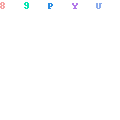Although it is virtually impossible to completely eliminate bounces, understanding their causes and how to prevent them significantly optimizes the effectiveness of your communications.
In this article, we will shed light on the best practices for reducing bounces in your email campaigns as much as possible. At Adtail, we have accumulated extensive experience in all areas of digital marketing and are ready to share our knowledge on this specific topic. Keep reading!
What causes a bounce?
A bounce occurs when an email is returned due to an error, which can be temporary or permanent.
This means that the sent email does not germany email list successfully reach the recipient's inbox.
Bounces are significant events in email marketing campaigns, as they directly affect the delivery rate and, consequently, the effectiveness of the campaign.

What happens if there is bounce abuse?
A high bounce rate can harm your sender reputation with internet service providers (ISPs), potentially leading to future messages being marked as spam or blocked before reaching inboxes.
Therefore, it is very important to monitor and manage these rates to optimize email communication strategies.
It is also important for you to know that bounces are divided into two categories: hard bounce and soft bounce. Below, we will talk more about each of them.
Hard bounce
A hard bounce results from permanent issues. This includes situations where the email address is invalid or no longer exists, for example. Learn more:
What is hard bounce?
As we explained, a "hard bounce" refers to a permanent error in the delivery of an email, indicating that the message cannot be delivered to the recipient's address.
This usually occurs when the email address is invalid, misspelled, or no longer exists.
A hard bounce signals that future attempts to send messages to that address will also fail.
Additionally, this type of bounce leads to the address being removed from the contact list to preserve the health and reputation of the sending domain with Internet Service Providers (ISPs).
What is the maximum hard bounce percentage that a submission can have?
A good maximum percentage of hard bounces in an email marketing campaign should be kept very low, usually below 2%. Ideally, efforts should be made to keep this rate below 1%.
Hard bounce rates higher than these values may indicate issues with the quality of your contact list, such as outdated or incorrectly collected data.
Internet service providers and email sending platforms closely monitor these rates. In the case of Locaweb , for example, the contracted service is immediately suspended when a customer's bounce rate exceeds 30%.
Main types of hard bounces
Hard bounces occur for a variety of reasons, each indicating a specific type of problem with email delivery.
Below, see the main types of hard bounces that can occur:
Destination provider rejected the message
This occurs when the recipient's email server rejects the sent message.
Most of the time, it happens due to security settings, such as spam filters or specific rules that prevent the delivery of emails from certain senders.
Contact blocked by reputation
In this case, the email is rejected because the sender has a bad reputation with the recipient's email provider.
This may be due to previous reports of spam or other unsavory email sending behavior.
Provider returned that the contact does not exist
It means that the email address provided by the sender does not correspond to an active or valid account on the recipient's server.
Not a valid contact
Similar to the previous case, this type of bounce occurs when the email address is formatted incorrectly or simply does not exist.
Provider blocked the domain
Occurs when the sender's domain is blacklisted on the recipient's server.
This is usually related to past activity associated with spam or malicious behavior.
Provider blocked the contact
Specifically, the recipient's email is configured to block emails coming from a specific address or domain, which results in a hard bounce.
Provider returned that the email is not private
This message indicates that the recipient email address is part of a service or domain that does not accept personal or private email, possibly reserved for internal or administrative communications.
Contact with permanent error
This is a general case for hard bounces where the identified problem is not temporary and is not expected to resolve itself without direct action to correct the error.
Each of these issues requires a specific approach to resolution, often involving cleaning and regularly updating contact lists.
Additionally, you should ensure that you adhere to email sending best practices to maintain a good reputation with email providers.